
We’ve seen this house in the spring; now here it is in the fall, when we can see more of it because there are fewer leaves.

Comments

We’ve seen this house in the spring; now here it is in the fall, when we can see more of it because there are fewer leaves.


A pair of houses probably built in the 1860s or 1870s, according to old maps, with an addition in the rear in the 1880s.

This building on Wood Street, right across from the subway station, was probably put up in the 1880s; it appears on an 1890 map as belonging to Jonathan D. Thompson, and in 1923 still belonged to J. D. Thompson. The elaborate stone front is liberally decorated with incised patterns. We would call the style Italianate; the architect probably thought of it as Italian Renaissance.
Update: Note the comment from “Camerafiend” below, which gives us news clippings to show us that this building was designed by E. M. Butz and built in 1874. E. M. Butz is perhaps most famous as the architect of the Western Penitentiary.


These two houses facing West Park on what used to be Irwin Avenue both have interestingly complex histories. The one above has a detailed history by the late Carol Peterson, so here we will only mention the things that led to its appearance today and encourage you to see the Peterson history for more details. It was built in about 1870 as an Italianate house. In 1890 Augusta and Jacob Kaufmann of the Kaufmann Brothers department store bought the house. It was given a third floor, and the whole house was made over in the Romanesque style with Queen Anne overtones.

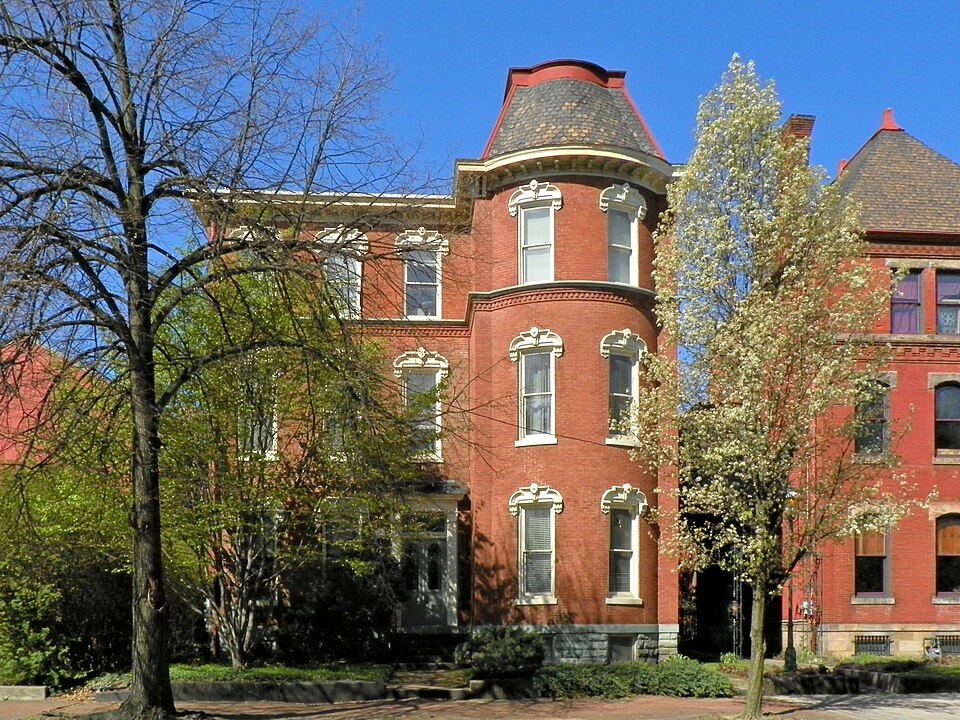
The house next door was probably built at about the same time as its neighbor. Without the help of Carol Peterson, we can only report what we observe. It was also built in the Italianate style, and it looks as though the third floor is an addition here as well. But the addition may have been made earlier than the alterations to its neighbor, since the tall windows were done in the same Italianate style as the ones below the third floor. The round bay in front was finished off with a mansard roof, showing the influence of the Second Empire style that was popular here before Romanesque became the big fad.
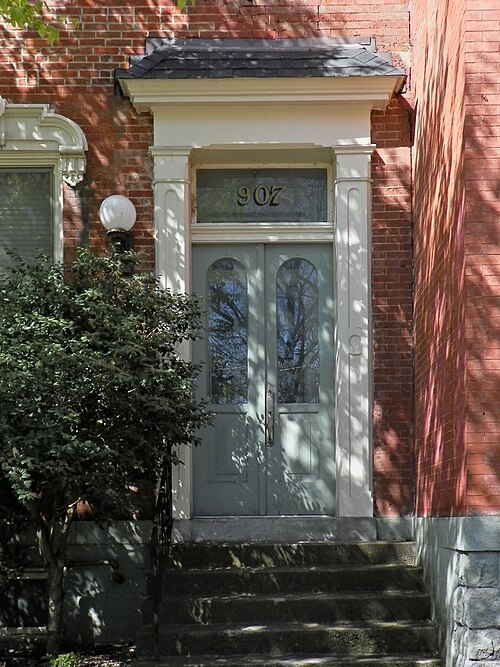
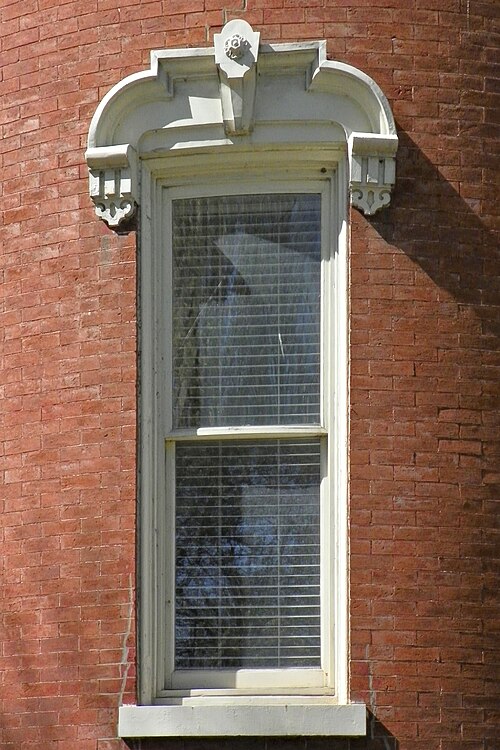


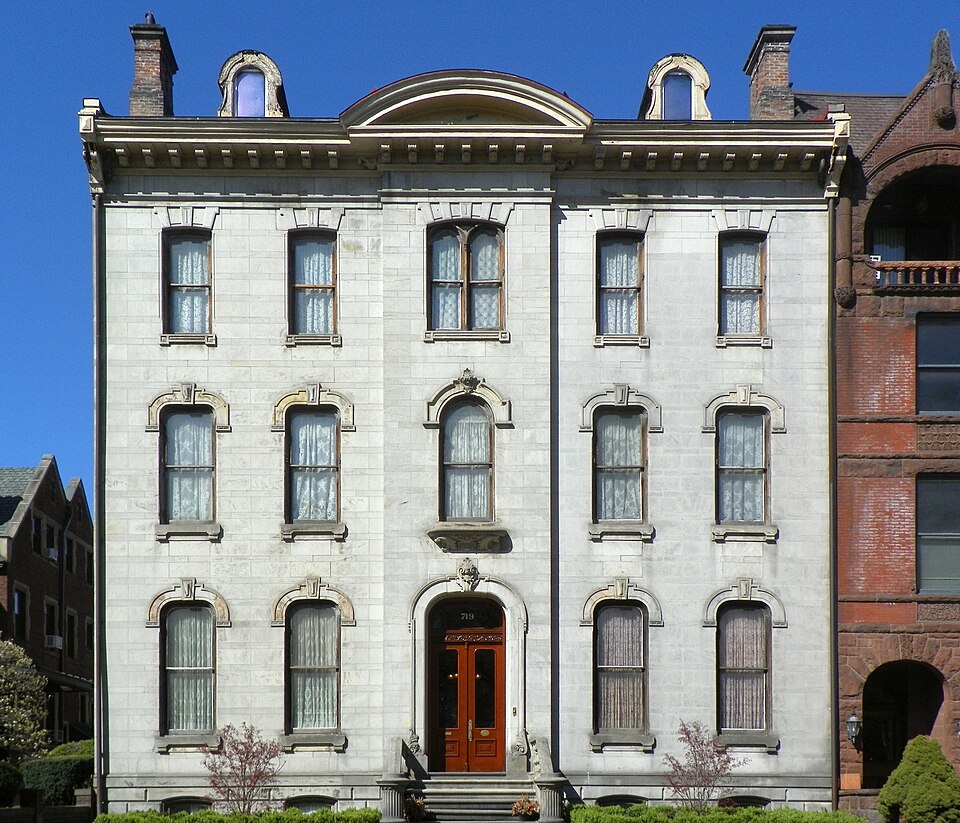
Letitia Holmes, a widow who had inherited a fortune from her pork-packing husband, had this house built in the late 1860s and lived here till she died half a century later. The restrained but rich Italianate style suggests an architect with taste, and some day old Pa Pitt will find out who it was.
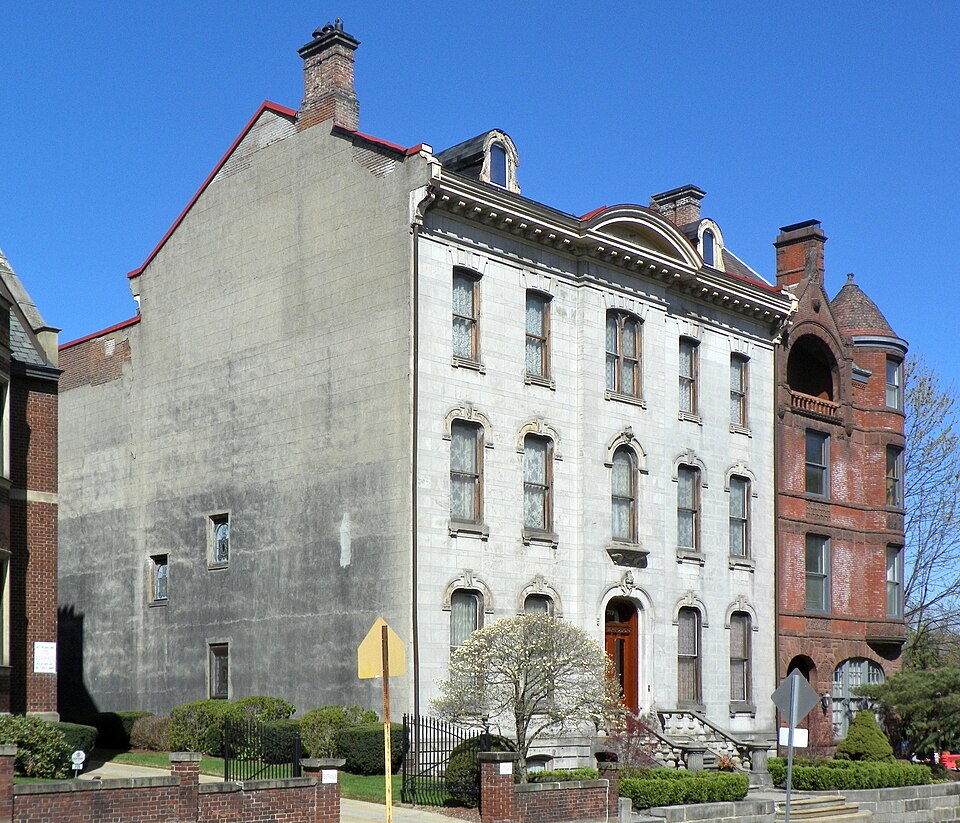
The late Carol Peterson wrote a thorough house history of 719 Brighton Road, so Father Pitt will send you there for more details.


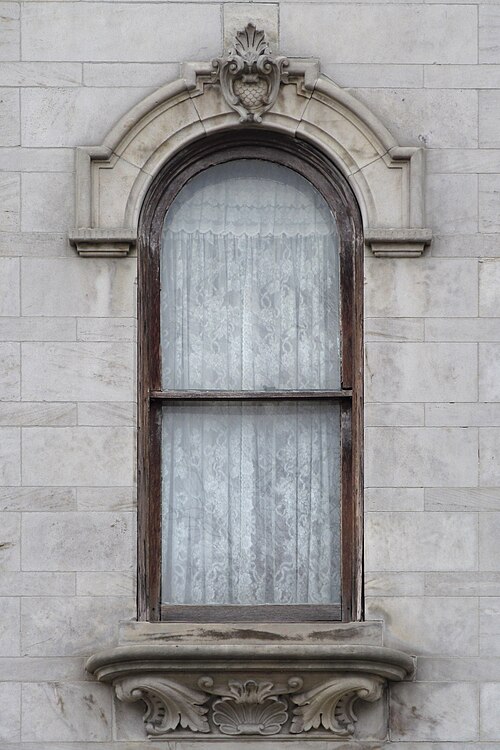
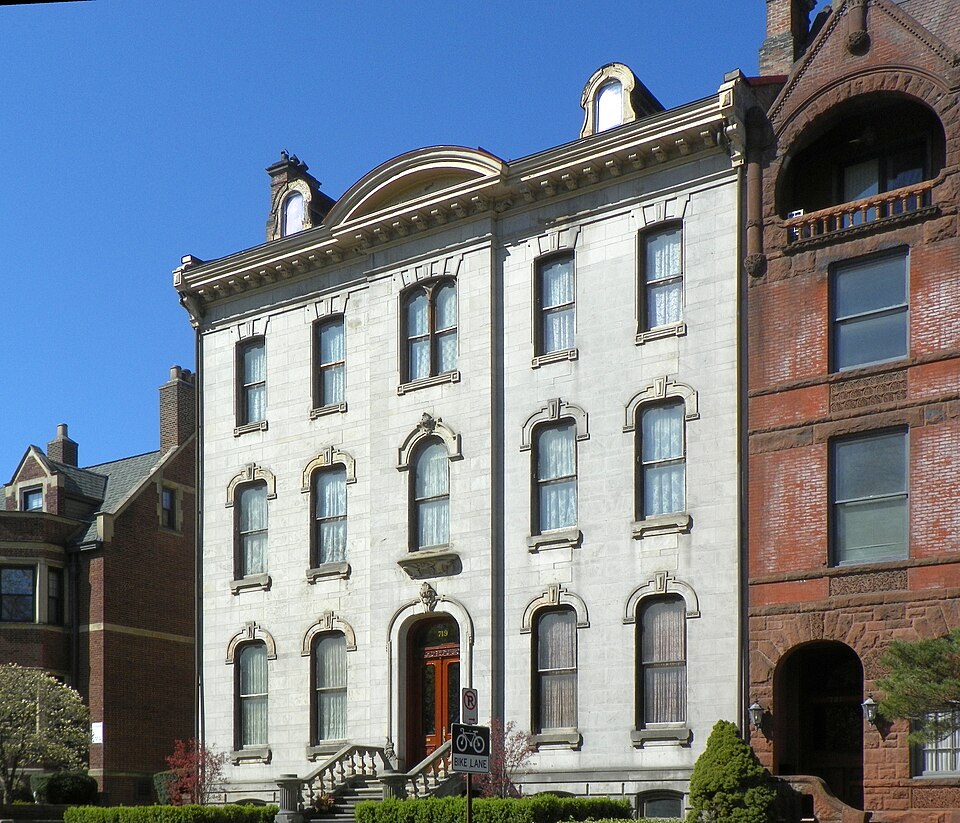
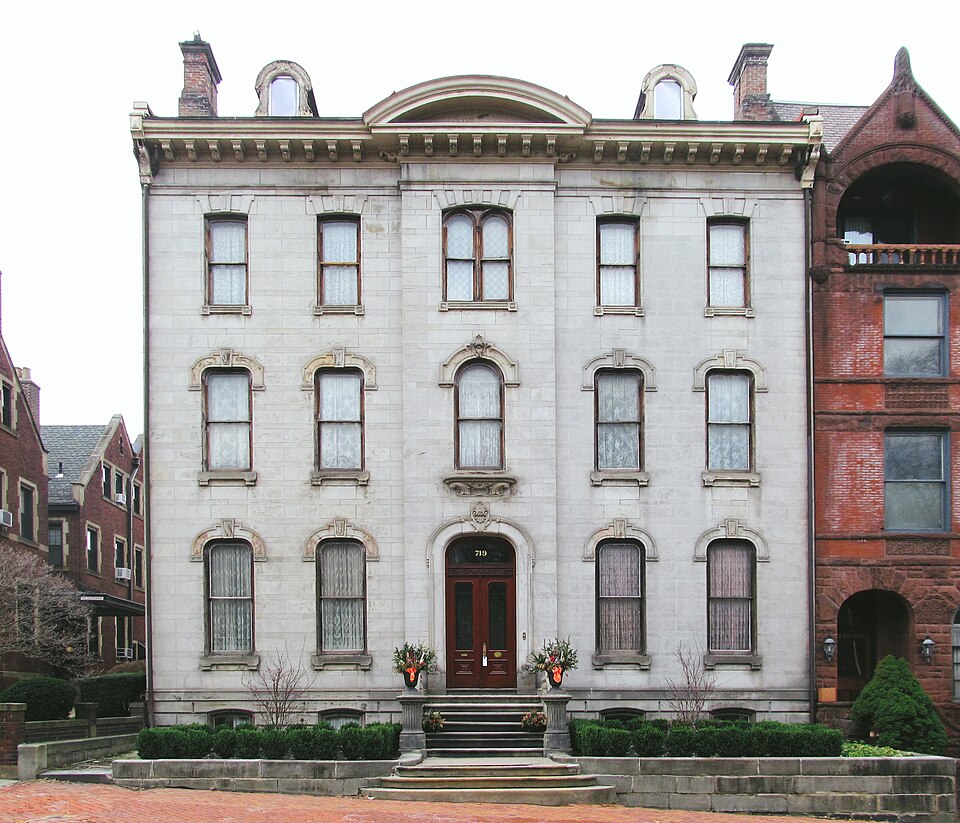

A few weeks ago old Pa Pitt took a wintry walk on North Avenue (which used to be Fayette Street back when it did not run all the way through to North Avenue on the rest of the North Side). He took piles of pictures, and although he published four articles so far from that walk (one, two, three, four), there’s still quite a collection backed up waiting to be published. Thus this very long article, which is a smorgasbord of Victorian domestic architecture with a few other eras thrown in. Above, a pair of Italianate houses. They both preserve the tall windows typical of the high Italianate style; the one on the right still has (or has restored) its two-over-two panes.


A couple of blocks of North Avenue, where we can see some fine Italianate houses of the Civil War era, interspersed with some towering Queen Anne mansions. We start at the corner of Palo Alto Street, where a Queen Anne house makes the most of a tiny lot by going up to a fourth floor.


These two houses share splendid porches, probably added later, since the porches match even though the houses do not. The owners of the houses have coordinated their efforts, so that the porches match.

Three more modest houses, though their full third floors give them a generous allotment of bedrooms.

A pair of houses that were both the peak of elegance in different eras. The Italianate one on the right goes for a simpler dignity; the Queen Anne on the left pulls out all the stops to make the most picturesque composition possible. Note the relative heights, by the way: high ceilings were a feature of the Italianate style in better houses, so that the house at left adds one more floor in exactly the same vertical height.
Seventeen years ago, Father Pitt published a picture of the front door of the house on the right. The picture was taken on 120 film with a folding Agfa Isolette.



Two simple and attractive Italianate houses, one of which has grown a partial fourth floor.

Here is an interesting document of how the neighborhood has changed. The house at left was originally an Italianate residence; the corner store may have been original or may have been added later. The projecting commercial building next to it, which probably dates from about 1920, was added when the house was taken over by the United States Casket Company, later the Melia Casket Company, which still inhabited the building until about twelve years ago. Both buildings have had a thorough renovation since the casket-makers moved out.



Two different interpretations of Italianate, one of which has sprouted an inartistic dormer to give it a fourth floor.


Finally, a center-hall house in a kind of late Greek Revival style; it occupies a double lot.


Pine Road is a short street in a very tony section of Sewickley. Here are two fine houses in very different styles. First we have an Italianate house, probably dating from the 1880s or so.




Here is an elegant Dutch colonial with a fine growth of ivy on one of its chimneys.




Most of us walk right by this building without giving it much thought, but it stands for a momentous transition in the history of the city. According to the Pittsburgh History and Landmarks Foundation, it is probably the last building constructed as a single-family house in downtown Pittsburgh.
Pittsburgh began in the small triangle that is downtown today, and through the first half of the 1800s, a large part of the population remained within those limits. The city was a warren of narrow streets and narrower alleys where little houses crowded with stores and workshops. After the Civil War, though, the land downtown simply became too valuable to build houses on. The family who built this Italianate house on Penn Avenue, where a number of well-to-do families still lived, could not have guessed that they would be the last to build a house in the Triangle, but they would certainly have been aware that the city was changing rapidly.

The Italianate details need a bit of polishing up, but they are still well preserved.

Two rows of houses, both in the Italianate style, but at different scales.

These more modest houses are, in form, the typical Pittsburgh city house of the nineteenth century. They are raised above the common herd by Italianate detailing, such as the cornice brackets and elaborate entrances.



These taller and grander houses share many of the same stylistic traits as their smaller neighbors, but they have full third floors, and everything is of a slightly higher grade, including the arched windows and transom over the front door.

